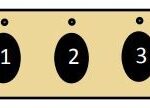Child care costs can be a significant burden for many families, often making it challenging for parents to work or attend school. To address this issue, various governments and organizations offer child care subsidy programs designed to provide financial assistance to eligible families. These programs are crucial in increasing access to quality early learning and care, ensuring that more children have the opportunity to thrive.
Child care subsidy programs, like the Department of Elementary and Secondary Education (DESE) Child Care Subsidy Program in Missouri, are specifically designed to help families with the expenses of child care. By reducing these costs, subsidies enable parents to pursue employment, job training, or educational opportunities, contributing to their economic stability and self-sufficiency. These programs recognize that access to affordable child care is not just a family issue, but also an economic issue that impacts communities as a whole.
Who Benefits from Child Care Subsidies?
Eligibility for child care subsidy programs typically depends on various factors, including family income, household size, and the reason for needing child care. Often, these programs prioritize families with lower incomes, single parents, or those participating in work or education-related activities. Pre-screening tools and application processes are usually in place to help families determine if they qualify for assistance. For instance, the Missouri DESE program encourages families to use a “Do I Qualify?” tool or directly apply through their child care data system to check their eligibility.
What Do Child Care Subsidies Cover?
Child care subsidies are generally intended to cover a portion of the costs associated with licensed child care services. This can include care provided in child care centers, family child care homes, or by licensed caregivers. The specific amount a program pays can vary, and some programs utilize a sliding fee scale, where the family’s contribution is adjusted based on their income. The recent budget increase in Missouri for Fiscal Year 2025, as supported by Governor Parson and the General Assembly, demonstrates a commitment to increasing the subsidy rates and thus, the affordability of child care for eligible families.
Reporting Changes and Maintaining Eligibility
Once enrolled in a child care subsidy program, families are usually required to report any significant changes in their circumstances. These changes can include updates to contact information, changes in income (especially increases exceeding program limits), or if the need for child care ends. Prompt reporting ensures the accuracy of the subsidy and helps families maintain their eligibility. The Missouri program, for example, requires parents to report changes within 10 calendar days, emphasizing the importance of keeping their online accounts updated or submitting required forms to the relevant department.
In conclusion, child care subsidy programs are vital resources that play a critical role in supporting families and promoting early childhood education. By providing financial assistance, these programs not only ease the financial strain of child care costs but also enable parents to pursue opportunities for personal and professional growth, ultimately benefiting both families and the broader community.
